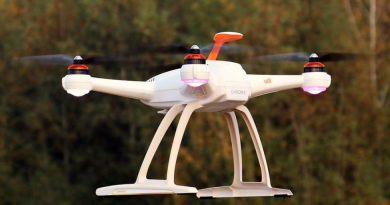The Role of Artificial Intelligence in Predicting Satta Matka Results: Fact or Fiction?
Many Satta Matka players will tell you that AI prediction tools have completely changed their game. They discuss impressive accuracy rates and complex algorithms. Why are these AI tools so well-liked nowadays? Do they work as well as people claim?
Regarding AI prediction services, experts have differing views. The move to AI-powered tools may raise concerns even among users who like the current prediction techniques. Think about how random number games actually operate before investigating AI prediction apps. It is simpler to evaluate the true advantages and drawbacks of AI predictions with this knowledge. It is up to each player to decide if these tools are appropriate for their needs.
Contents
What Are AI Prediction Tools?
AI prediction tools use machine learning and artificial intelligence algorithms to predict Satta Matka results. These programs examine past data, spot trends, and forecast upcoming draws. This method distinguishes AI tools from conventional guessing techniques. Numerous advantages over manual number selection are promised in marketing materials.
How AI Prediction Tools Operate
The claimed accuracy of AI prediction tools is the primary motivator for many users. According to these services, their algorithms can process enormous volumes of data nearly instantly. This processing power is especially useful for pattern recognition tasks, particularly when examining years’ worth of past outcomes. The complexity of the data and the number of variables taken into account at once are said to have no bearing on accuracy.
Features like “hot number detection” and “cold pattern analysis” are promoted by a lot of AI tools. When trying to increase their winning odds, for example, countless players are discovering that they prefer more methodical approaches to number selection. This process should be simple thanks to AI prediction tools.
Impressive statistics are promoted by well-known apps and websites. Services claim to have 90% or greater accuracy rates. Players who are dissatisfied with conventional random selection techniques are drawn to these claims. User reviews frequently emphasize sporadic victories and the assurance that results from taking a methodical approach.
The Truth About Coincidences
When assessing these tools, it is essential to comprehend the true nature of randomness. Some number games are truly random, but any prediction system faces difficulties because of this. Every result of a random draw is independent of the others and has no bearing on the results of earlier draws.
This basic idea is problematic for many prediction systems. No matter how sophisticated the analysis, it is impossible to predict random events with mathematical certainty. Although the algorithms might spot obvious trends in past data, these trends do not ensure future outcomes.
Pattern Recognition and Machine Learning
Finding correlations in big datasets is a strength of AI systems. In order to train machine learning models to identify possible patterns, developers feed them historical Satta Matka results. Number frequencies, time intervals, and sequence relationships are among the variables that the systems examine.
For this, a number of algorithms are frequently employed. Complex data relationships can be processed by neural networks. Mathematical correlations can be found using statistical models. Temporal patterns can be examined using time-series analysis. Even in cases where the applications are dubious, the technology underlying these systems is frequently valid.
Marketing Claims vs. Mathematical Reality
A lot of AI prediction services have eye-catching advertisements. Impressive technical descriptions and scientific terminology are used in the promotional material. Nevertheless, a number of warning signs imply that these assertions might be overstated.
For random events, accuracy rates greater than 70–80% should immediately raise suspicion. Such accuracy is not possible for legitimate random number systems. It’s possible that services are overselling their capabilities if they won’t disclose their testing results or methodology.
Success stories on their own can be deceptive. Users attribute the sporadic winning streaks that are naturally produced by random events to the prediction system. Conversely, losing streaks are frequently dismissed as user error or transient setbacks.
The Psychology of Prediction
When faced with uncertainty, humans instinctively look for patterns and control. By assisting ancestors in recognizing opportunities and threats, pattern recognition served evolutionary purposes. In genuinely random circumstances, this same inclination can work against people.
Prediction tools are psychologically appealing because they give the impression of control. Instead of choosing numbers at random, users feel more strategic and knowledgeable when they follow AI recommendations. Regardless of actual efficacy, this psychological benefit is present.
People’s interpretations of results are influenced by confirmation bias. The accuracy of the system is credited with successful predictions, which are remembered clearly. Predictions that don’t work out are frequently dismissed or explained away as anomalies.
Scientific Limitations
Prediction algorithms face fundamental difficulties due to randomness. Basic mathematical concepts are insurmountable by even the most advanced artificial intelligence systems. When there is true randomness, past performance does not accurately predict future results.
Although correlations in historical data can be found using statistical analysis, they do not imply causality or predictability in the future. In random sequences, apparent patterns are frequently merely coincidental arrangements that are not repeatable.
When tested against historical data, the most sophisticated prediction systems might work well, but they might not hold up when applied to brand-new, truly random events. This restriction is a basic property of random systems, not a weakness of existing technology.
Realistic Aspects
Realistic expectations should guide anyone interested in AI prediction tools. Rather than being dependable investment strategies, these services are best viewed as entertainment. Financial issues can be avoided by creating sensible budgets and keeping reasonable objectives.
Recognizing the limitations of any prediction system is essential to responsible use. No matter how advanced the analysis tool is, random events will always be unpredictable. The inherent risks of gambling cannot be eliminated by any AI system.
Conclusion
It is necessary to comprehend both the strengths and weaknesses of AI prediction tools in order to evaluate them. These systems are capable of data analysis and pattern recognition, but they are unable to make accurate predictions about truly random events. Although many tools have valid technology, their applications frequently offer more than mathematics can provide.
The majority of accuracy claims are probably overstated or the result of faulty testing procedures. The complex marketing jargon may conceal underlying predictive capacity limitations. Players who are thinking about using these tools should keep their expectations reasonable and approach them more as entertainment than as surefire ways to win.
In gambling activities, the allure of prediction will never go away. People look for ways to benefit in unpredictable circumstances, whether it be through modern AI or traditional fortune telling. But no matter how much technology advances, truly random events will always be unpredictable. Players can choose prediction tools and gambling activities more wisely if they are aware of this fact.



